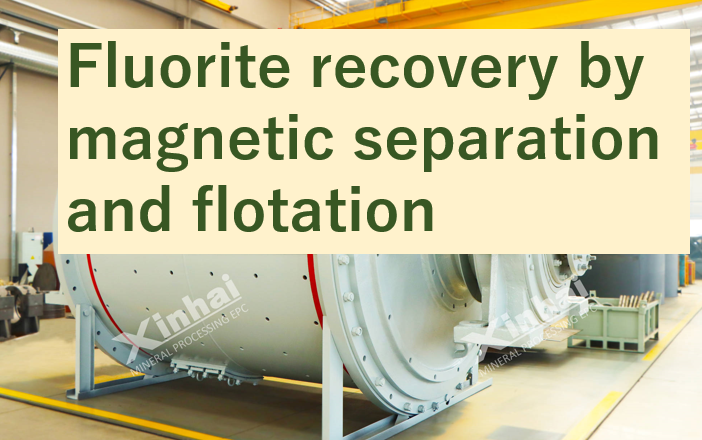Fluorite recovery by magnetic separation and flotation
2024-08-09 Xinhai (1670)
2024-08-09 Xinhai (1670)
If you have any questions, please contact us through the following ways, we will give you more and better assistance!

As a precious non-renewable resource, fluorspar ore has significant economic value. As a typical non-metallic mineral, fluorite ore is non-magnetic and has complete cleavage properties. It often coexists with minerals such as calcite and barite, making its selection process challenging. Traditional beneficiation methods include hand separation, gravity separation and flotation, of which flotation has become a mainstream technology due to its high efficiency.
Hand selection is suitable for fluorite ores whose color is significantly different from that of gangue minerals, making it easy to identify with the naked eye. Gravity separation uses the difference in specific gravity between fluorite and gangue minerals to remove gangue such as quartz through heavy media pre-selection to improve the grade of fluorite ore. Flotation technology further improves the grade and recovery rate of fluorspar concentrate by using inhibitors, collectors and other chemicals, and is currently the most effective means of separating fluorspar and gangue minerals.

When processing raw ores containing a lot of magnetic minerals, the combined magnetic separation and flotation process is particularly important. For example, in the process of recovering fluorite ore from a scheelite tailing in Hunan, Feng Shenglei used the magnetic first and then flotation process to remove a large amount of garnet through a high-gradient magnetic separator, and then obtained high-grade fluorite concentrate through flotation. Ai Guanghua and others also used this process to recover fluorspar from black and white tungsten tailings, and successfully improved the recovery rate and grade of fluorspar.
For fluorspar ores with low magnetic mineral content, one or two stages of grinding are usually used to further dissociate fluorspar and gangue minerals and create conditions for flotation operations. Zhang Jinxia and others obtained high-grade fluorspar concentrate through two-stage grinding and multiple selections in an experiment on low-grade refractory fluorspar ore in a certain place. In the experiment of a quartz-type fluorite mine in western Henan, Lu Liang and others used a process of coarse grinding and high-grade medium ore regrinding and returning to the second stage of concentration, and also obtained high-grade fluorspar concentrate.
In summary, whether it is raw ore with a high content of magnetic minerals or raw ore with a low content, through reasonable mineral processing technology, the recovery rate and grade of fluorspar ore can be effectively improved, and the efficient utilization of fluorspar resources can be achieved.